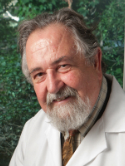Engineering CAR-T cells for radiohapten capture in imaging and radioimmunotherapy applications Journal Article
| Authors: | Kurtz, K.; Eibler, L.; Dacek, M. M.; Carter, L. M.; Veach, D. R.; Lovibond, S.; Reynaud, E.; Qureshy, S.; McDevitt, M. R.; Bourne, C.; Monette, S.; Punzalan, B.; Khayat, S.; Verma, S.; Kesner, A. L.; Cheung, N. K. V.; Schöder, H.; Gajecki, L.; Cheal, S. M.; Larson, S. M.; Scheinberg, D. A.; Krebs, S. |
| Article Title: | Engineering CAR-T cells for radiohapten capture in imaging and radioimmunotherapy applications |
| Abstract: | Rationale: The in vivo dynamics of CAR-T cells remain incompletely understood. Novel methods are urgently needed to longitudinally monitor transferred cells non-invasively for biodistribution, functionality, proliferation, and persistence in vivo and for improving their cytotoxic potency in case of treatment failure. Methods: Here we engineered CD19 CAR-T cells (“Thor”-cells) to express a membrane-bound scFv, huC825, that binds DOTA-haptens with picomolar affinity suitable for labeling with imaging or therapeutic radionuclides. We assess its versatile utility for serial tracking studies with PET and delivery of α-radionuclides to enhance anti-tumor killing efficacy in sub-optimal adoptive cell transfer in vivo using Thor-cells in lymphoma models. Results: We show that this reporter gene/probe platform enables repeated, sensitive, and specific assessment of the infused Thor-cells in the whole-body using PET/CT imaging with exceptionally high contrast. The uptake on PET correlates with the Thor-cells on a cellular and functional level. Furthermore, we report the ability of Thor-cells to accumulate cytotoxic alpha-emitting radionuclides preferentially at tumor sites, thus increasing therapeutic potency. Conclusion: Thor-cells are a new theranostic agent that may provide crucial information for better and safer clinical protocols of adoptive T cell therapies, as well as accelerated development strategies. © The author(s). |
| Keywords: | controlled study; protein expression; human cell; nonhuman; antineoplastic agents; positron emission tomography; antineoplastic agent; sensitivity and specificity; binding affinity; t lymphocyte; t-lymphocytes; mouse; metabolism; tumor localization; animal experiment; animal model; in vivo study; antineoplastic activity; cytotoxicity; correlation analysis; isotope labeling; tissue distribution; dosimetry; lymphoma; patient safety; reporter gene; adoptive transfer; radioisotope; radioimmunotherapy; radioisotopes; adoptive immunotherapy; immunotherapy, adoptive; cd19 antigen; single chain fragment variable antibody; alpha radiation; procedures; yttrium 86; cell engineering; tetraxetan; hapten; alpha-particles; human; female; article; positron emission tomography-computed tomography; positron emission tomography computed tomography; theranostic; theranostic nanomedicine; chimeric antigen receptor t-cell immunotherapy; car-t cells; t cell tracking |
| Journal Title: | Theranostics |
| Volume: | 13 |
| Issue: | 15 |
| ISSN: | 1838-7640 |
| Publisher: | Ivyspring International Publisher |
| Date Published: | 2023-01-01 |
| Start Page: | 5469 |
| End Page: | 5482 |
| Language: | English |
| DOI: | 10.7150/thno.87489 |
| PUBMED: | 37908719 |
| PROVIDER: | scopus |
| PMCID: | PMC10614694 |
| DOI/URL: | |
| Notes: | The MSK Cancer Center Support Grant (P30 CA008748) is acknowledged in the PubMed record and PDF. Corresponding MSK author is Simone Krebs -- Source: Scopus |
Altmetric
Citation Impact
BMJ Impact Analytics
MSK Authors
Related MSK Work
























